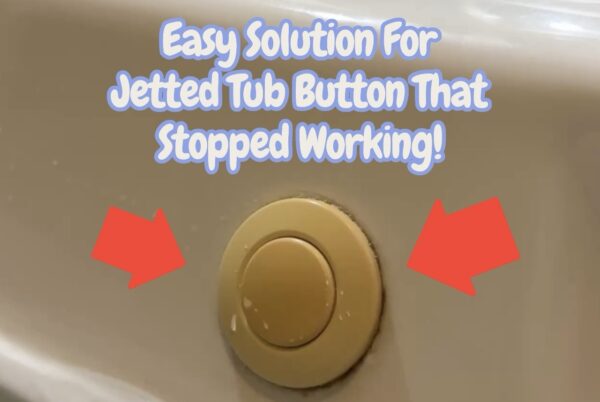
A Running Toilet Can Waste Over 200 Gallons a Day — Here’s How I Fixed Mine
I thought I was imagining things. That quiet little trickle sound coming from the bathroom? Turns out, it wasn’t in my head. My toilet had been running—nonstop—for days. The worst part? I later found out that a single running toilet can waste more than 200 gallons of water per day. That’s not just wasteful—it’s expensive.
The tank looked fine. The bowl flushed normally. But the water just kept flowing.
It’s one of those hidden problems that slowly eats away at your wallet, and if you don’t deal with it fast, your next water bill might punch you right in the gut.
This Annoying Problem Nearly Doubled My Water Bill
I’ll admit, I ignored it at first. Life gets busy. But when the utility bill came, it hit hard. I saw a huge spike in water usage, and I hadn’t done anything out of the ordinary. No sprinkler marathons, no pool filling, nothing new.
That’s when I got serious about figuring out what was going on inside that tank.
The Tank Was Overfilling — Constantly
I lifted the toilet lid and let it refill after a flush. What I noticed was subtle — the water kept rising just a little too far. It was going into the overflow tube, triggering the fill valve to keep trying to fill more… on and on. That’s the classic sign your float is set too high or is out of adjustment.
Once I saw that, everything clicked. That little adjustment was costing me gallons by the hour.
Here’s where I finally learned to deal with it head-on:
👉 This guide walked me through it, step by step
How I Adjusted the Toilet Float (Without Calling a Plumber)
Turns out, this fix is way easier than you’d think. The float in your toilet tells it when to stop filling. If it’s too high, water keeps flowing into the overflow pipe, and the tank never “finishes” refilling.
Mine was a float cup style. All I had to do was grab a flathead screwdriver and turn the adjustment screw a few times to lower the water level about an inch below the overflow pipe. Boom — fixed.
In case you have a float ball setup, it’s just a matter of bending the metal rod slightly downward. Both options take less than five minutes. Seriously.
This entire problem — and its easy fix — is broken down beautifully here:
🔧 Toilet Won’t Stop Running? Here’s the Real Fix
Still Running? Time to Check the Flapper
If adjusting the float doesn’t stop the toilet from running, the next thing I’d look at is the flapper. That little rubber seal at the bottom of the tank can warp or crack with time, and even a small gap means a constant leak.
How I figured it out? I used the old food coloring trick. I dropped a few drops of red food coloring into the tank and waited 15 minutes without flushing. Sure enough, the bowl turned pink — water was leaking straight through.
Replacing the flapper is dirt cheap and takes less than 10 minutes. The hardest part was turning off the water supply and drying my hands enough to not drop the new flapper into the tank.
You Might Need a New Fill Valve (It’s Not as Bad as It Sounds)
If your toilet is still running after adjusting the float and replacing the flapper, the fill valve could be shot. Mine had a slow hiss even when the tank looked full. These valves are usually plastic, and after years of use (especially if you’ve got hard water), they wear out.
Swapping it out was easier than expected — I grabbed a universal fill valve at the hardware store and followed the instructions. If you’ve ever put together IKEA furniture, you’re already overqualified.
If you want a detailed walk-through on how to do this right:
🔩 This post saved me a ton of trial and error
How Much Water Is That Really? It Adds Up Fast
I used a water usage calculator online and discovered that 200 gallons a day adds up to 6,000 gallons in a month. That’s about 8 full bathtubs of wasted water every single day.
It was costing me real money — not just in water charges, but in wastewater fees too, since my utility company bills both off water usage.
I never thought my toilet would be one of the most expensive fixtures in my house until I let it run unchecked.
What I Do Now to Prevent It From Happening Again
Ever since fixing the issue, I now check all our toilets about once a month. Just a quick peek inside the tank and a flush to make sure everything is sealing and stopping like it should.
Here’s what I watch for:
- Water level too close to the top of the overflow pipe
- Slow filling or constant hissing sounds
- Flapper not sealing tightly
- Tank refilling by itself without a flush
Any of those signs, and I know I’ve got something to take care of before the next bill shows up.
Don’t Wait on This One
If you even think your toilet might be running, take the lid off and take a look today. The fix is usually simple, and it’s one of the best ways to stop wasting money in your home. Trust me, you don’t want to wait until the water bill slaps you in the face like mine did.
You can find the exact steps I followed here:
👉 Toilet Won’t Stop Running? Here’s the Real Fix
As an Amazon Associate we earn from qualifying purchases through some links in our articles.



